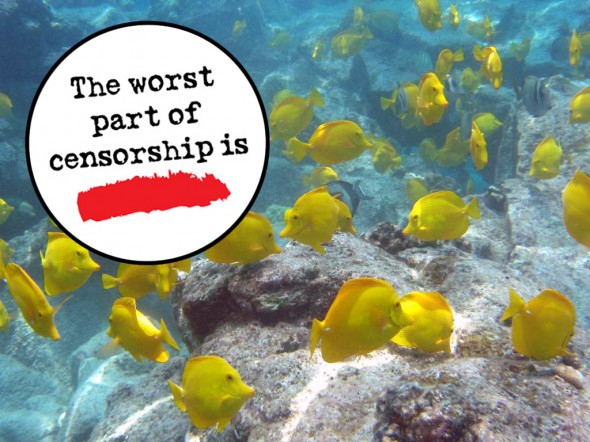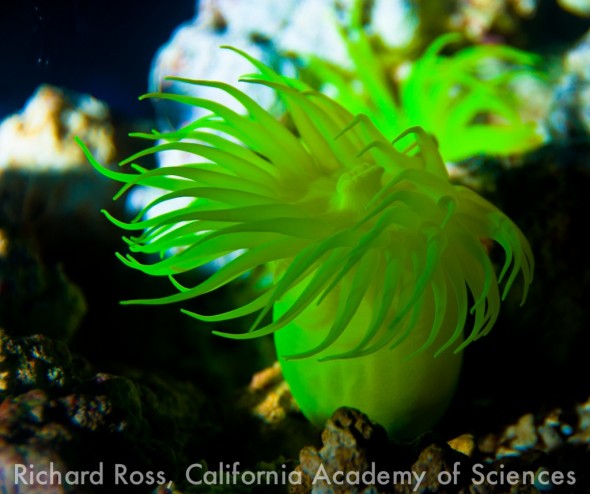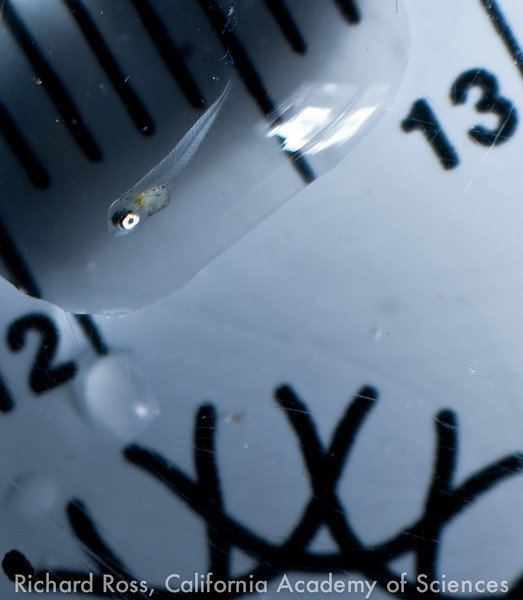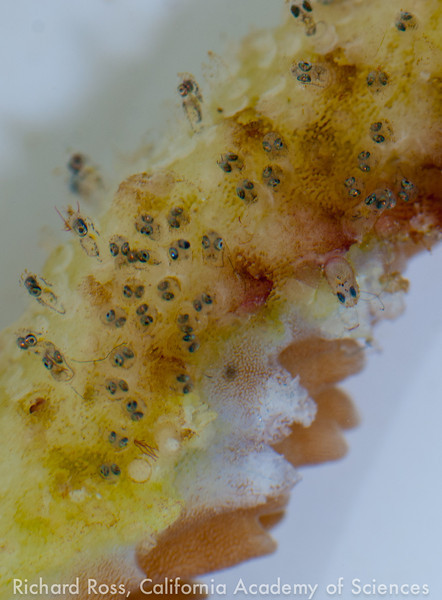December 30, 2011
No Comments
From Reefs.com
http://vimeo.com/34312686
I took a chance on a Live Aquaria Divers Den Juvie Regal Angel (Pygoplites diacanthus) about 2 months ago. As beautiful as this fish is, it ended up getting an appetite for some of my favorite SPS corals as well as a voracious appetite for my growing Zoanthid collection, so it’s got to go. Easier said than done right?
Catching a fish in a fully stocked, mature reef tank is often a hassle. A net is not going to work because there is too much coral growth in the way. Trying to remove the fish while it’s sleeping is not going to work (unless you are very lucky) because sleeping spots are so numerous and, invariably, the fish picks a spot at the bottom middle back of the tank. Removing rocks isn’t practical because, since the tank is mature, removing rocks probably means destroying the coral that you have worked to hard to grow. Since the reef is mature, it’s probably fully stocked with fish, so any attempt to use a fish hook isn’t going to work because other fish are going to get the food off the hook before the fish you are trying to catch even knows there is something to strike. Knock-out drugs won’t work either because not only are they hard to get, but even if you are able to squirt it in the face of the fish, the knocked-out fish can sink to the bottom where it is impossible to remove before it wakes up, swims away and laughs at you.
A net is not going to work because there is too much coral growth in the way. Trying to remove the fish while it’s sleeping is not going to work (unless you are very lucky) because sleeping spots are so numerous and, invariably, the fish picks a spot at the bottom middle back of the tank. Removing rocks isn’t practical because, since the tank is mature, removing rocks probably means destroying the coral that you have worked to hard to grow. Since the reef is mature, it’s probably fully stocked with fish, so any attempt to use a fish hook isn’t going to work because other fish are going to get the food off the hook before the fish you are trying to catch even knows there is something to strike. Knock-out drugs won’t work either because not only are they hard to get, but even if you are able to squirt it in the face of the fish, the knocked-out fish can sink to the bottom where it is impossible to remove before it wakes up, swims away and laughs at you.
To the best of my knowledge, that leaves one option – the fish trap. 5 days ago, I pulled out my trusty acrylic trap, the kind with the weighted door that is held open by a piece of monofilament with a suction cup on the end. This particular trap also has another piece of monofilament that you can pull on to slam the door closed quickly instead of simply relying on gravity to trap the fish. I used some electrical tape to affix an old algae magnet to the trap so I can rest the trap on the glass instead of on coral. The magnet also allows me to leave the trap in place over time without it getting blown around by the current. This is very important because unless you are very lucky and the fish goes right in (I am not lucky), the trap needs to be left in place over time so the fish gets comfortable enough with the trap to actually go in the trap. Of course, the most important part of trapping a fish with this method is patience – and man can that patience be annoying.
Every night, I bait the trap with some Reef Nutrition Mysis Feast and watch patiently as almost every other fish in the tank-Orange-spotted rabbitfish (Siganus guttatus), Radiant Wrasse (Halichores iridis), Multicolor angel (Centropyge multicolor), Potter’s Angelfish (Centropyge potteri), Margined butterfly (Chelmon marginatus), Yellow Tang (Zebrasoma flavescens), orchid dottyback (Pseudochromis friedmani), Mimic Saddle Puffer (Paraluterus prionurus) and even green chromis (Chromis viridis) hang out in the trap and chow down – often all at the same time- while the Regal hangs out near the trap entrance waiting for scraps. Every night the Regal gets a little closer to the trap, but doesn’t go in. I may need to catch every other fish that goes into the trap to make the Regal feel comfortable, but not yet. Tonight I moved some Zoanthids into the trap to make it even more enticing. I hope.
It’s really frustrating, but I keep calming myself down reminding myself that patience is the key and it works. Just a month ago, I had to catch two big lunare wrasses out of the 212,000 gallon reef tank at work. It took two weeks of baiting the trap for the fish to be comfortable enough to go in, and when the finally did, I was able to catch both of them in less than 10 minutes. But it took patience. Patience.
Some corals have fallen over, but I am going to leave them for now as not to disturb the Regal. Algae is growing all over the front glass, but I am going to leave it as not to disturb the Regal. So, here I sit, most of the pumps off to keep the food in the trap waiting…and waiting…and waiting…because thats what I have to do.
 The ongoing discussions about and with anti aquarium trade groups have been hopping on Facebook. Sadly they have taken a turn that makes me feel engaging with the anti trade side is often useless and should possibly be avoided.
What these groups are doing is deleting comments that respectfully disagree with them, and then pretending to be generous by replying…while at the same time blocking the people they say they are replying to. They are also assuming that everyone that disagrees with them disagrees with everything they have to say and that everyone disagrees about the same thing in the same way both of which are of course, not true. Because blocking people shuts down all real discussion, these misconceptions cannot be addressed or cleared up in an effort to find common ground and move everyone forward.
The ongoing discussions about and with anti aquarium trade groups have been hopping on Facebook. Sadly they have taken a turn that makes me feel engaging with the anti trade side is often useless and should possibly be avoided.
What these groups are doing is deleting comments that respectfully disagree with them, and then pretending to be generous by replying…while at the same time blocking the people they say they are replying to. They are also assuming that everyone that disagrees with them disagrees with everything they have to say and that everyone disagrees about the same thing in the same way both of which are of course, not true. Because blocking people shuts down all real discussion, these misconceptions cannot be addressed or cleared up in an effort to find common ground and move everyone forward. The ongoing discussions about and with anti aquarium trade groups have been hopping on Facebook. Sadly they have taken a turn that makes me feel engaging with the anti trade side is often useless and should possibly be avoided.
What these groups are doing is deleting comments that respectfully disagree with them, and then pretending to be generous by replying…while at the same time blocking the people they say they are replying to. They are also assuming that everyone that disagrees with them disagrees with everything they have to say and that everyone disagrees about the same thing in the same way both of which are of course, not true. Because blocking people shuts down all real discussion, these misconceptions cannot be addressed or cleared up in an effort to find common ground and move everyone forward.
The ongoing discussions about and with anti aquarium trade groups have been hopping on Facebook. Sadly they have taken a turn that makes me feel engaging with the anti trade side is often useless and should possibly be avoided.
What these groups are doing is deleting comments that respectfully disagree with them, and then pretending to be generous by replying…while at the same time blocking the people they say they are replying to. They are also assuming that everyone that disagrees with them disagrees with everything they have to say and that everyone disagrees about the same thing in the same way both of which are of course, not true. Because blocking people shuts down all real discussion, these misconceptions cannot be addressed or cleared up in an effort to find common ground and move everyone forward.
 A net is not going to work because there is too much coral growth in the way. Trying to remove the fish while it’s sleeping is not going to work (unless you are very lucky) because sleeping spots are so numerous and, invariably, the fish picks a spot at the bottom middle back of the tank. Removing rocks isn’t practical because, since the tank is mature, removing rocks probably means destroying the coral that you have worked to hard to grow. Since the reef is mature, it’s probably fully stocked with fish, so any attempt to use a fish hook isn’t going to work because other fish are going to get the food off the hook before the fish you are trying to catch even knows there is something to strike. Knock-out drugs won’t work either because not only are they hard to get, but even if you are able to squirt it in the face of the fish, the knocked-out fish can sink to the bottom where it is impossible to remove before it wakes up, swims away and laughs at you.
A net is not going to work because there is too much coral growth in the way. Trying to remove the fish while it’s sleeping is not going to work (unless you are very lucky) because sleeping spots are so numerous and, invariably, the fish picks a spot at the bottom middle back of the tank. Removing rocks isn’t practical because, since the tank is mature, removing rocks probably means destroying the coral that you have worked to hard to grow. Since the reef is mature, it’s probably fully stocked with fish, so any attempt to use a fish hook isn’t going to work because other fish are going to get the food off the hook before the fish you are trying to catch even knows there is something to strike. Knock-out drugs won’t work either because not only are they hard to get, but even if you are able to squirt it in the face of the fish, the knocked-out fish can sink to the bottom where it is impossible to remove before it wakes up, swims away and laughs at you.

